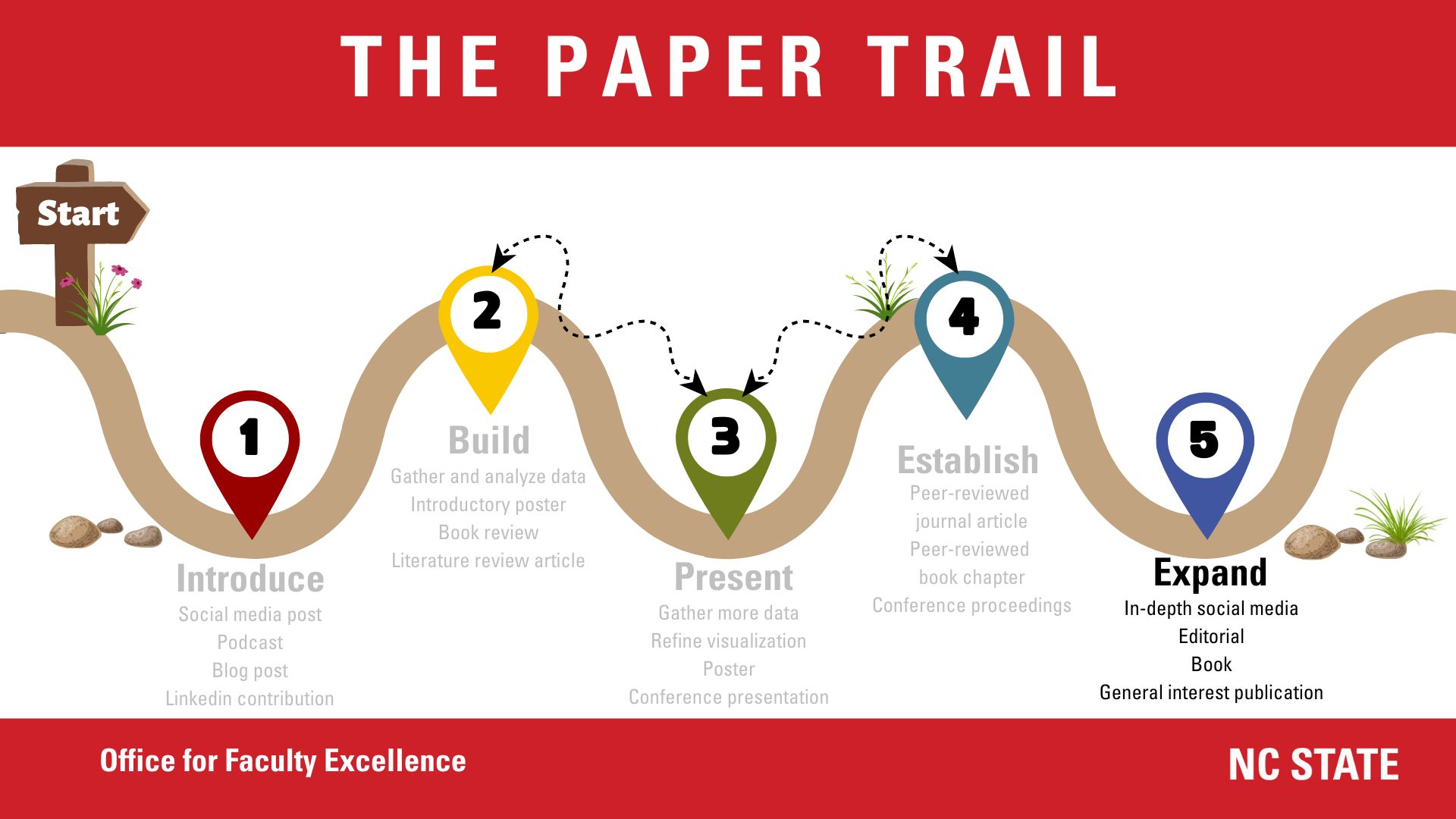The podcast music, I Talk to the Wind, produced by Yung Pinoy, as part of the NC State University Libraries State of Sound collection.
Expand
Welcome to the final week of The Paper Trail! As we wrap up this transformative five-week journey, we’re excited to explore how to take your academic work beyond traditional publications and engage with broader audiences. Our guest this week is Dr. Cat Warren, professor emerita at North Carolina State University and the New York Times bestselling author of What the Dog Knows: Scent, Science, and the Amazing Ways Dogs Perceive the World.
Cat’s path from academia to a broader public sphere is a testament to the power of storytelling and engagement. Growing up in Oregon with a father who was a fisheries and wildlife biologist, Cat’s early exposure to science laid the foundation for her future endeavors. With a diverse academic background that includes degrees in French literature and journalism, and extensive experience as a journalist, Cat eventually found her calling in teaching at NC State.
Her ability to translate complex scientific ideas into compelling narratives is a skill she honed over years of teaching courses like NC State’s Science Writing for the Media. This course, designed to help scientists communicate their work, is a perfect example of how academics can bridge the gap between scholarly research and public engagement.
When asked about expanding academic work to a broader audience, Cat emphasized the importance of communication and the role of academics as public intellectuals. She highlighted that this does not mean dumbing down the science but rather making it accessible and exciting. Teaching and writing for popular audiences require the same skills: distilling complex ideas into understandable and engaging narratives.
Cat’s advice for her younger self is particularly insightful for those in academia today:
Don’t wait until you have tenure or reach a certain milestone to start engaging with broader audiences. Begin early, and let it become a natural part of your academic routine. ~ Cat Warren
She also noted, “Part of it is that we censor ourselves more than people censor us. In other words, we allow ourselves to stay in these little boxes because we want to be obedient to our profession, we want to be obedient to the academic field we’re in.”
From my conversation with Cat, I gathered these practical tips for expanding your academic reach that might be helpful to others that are reaching this stage of their journey:
1. Editorials and Opinion Pieces: Whenever possible, share your expert insights on current events or trends in your field through editorials in news outlets (like your own university news) or online platforms. This not only positions you as a thought leader but also brings academic perspectives to the general public.
2. Books and General Interest Publications: Consider writing a book that translates your research into a format accessible to a broader audience. Cat’s own book, What the Dog Knows, as well as a young readers version of the same work, is a prime example of how to make scientific research engaging and relatable to multiple audiences.
3. In-Depth Social Media Posts: Use social media strategically to share your work. Platforms like X (the platform formerly known as Twitter), LinkedIn, and even blogs can be powerful tools for reaching a wider audience. Share not just your findings, but the stories behind your research, the challenges, and the impact.
4. Collaborate with Media: Take advantage of university resources like the News Bureau (we have a fantastic one at NC State), which helps faculty and graduate students communicate their work to the media. Learning how to give succinct, engaging interviews can significantly enhance your reach. Cat explained, “We have a number of people [at the News Bureau] whose very job it is to help train graduate students and faculty members who are doing interesting work to help them get that work out into the world.”
She also mentioned several role models in science journalism who have successfully expanded their reach, such as Deborah Blum, author of The Poisoner’s Handbook, and Maryn McKenna, author of Big Chicken. These individuals have shown how to bring scientific topics to life in ways that captivate and inform the public.
Cat’s final piece of advice is both encouraging and empowering:
Feel the wonder and enthusiasm for your work, and share that with the world. This isn’t about marketing; it’s about communicating the importance and excitement of your research. ~ Cat Warren
As we conclude *The Paper Trail*, remember that your work has the potential to make a significant impact beyond academic circles. Embrace the opportunity to expand your reach, engage with wider audiences, and contribute to public discourse. Thank you for joining us on this journey, and we look forward to seeing the incredible ways you will take your research to new heights!
If you enjoyed this week’s podcast and blog post, we have some items that we would like to share with you:
Cat’s book What the Dog Knows is available online to NC State users via the NC State Libraries.
Also, Cat recommends this useful website that offer tips and resources on how to write for general audiences: The Open Notebook and this book The Craft of Science Writing
Thank you for coming with us on The Paper Trail journey! Stay curious, stay engaged, and keep expanding your academic horizons. We hope this content was useful to you, and please know that we want to support you. You can leave us a comment (if you have an NC State ID), or we will be following this conversation on X at #NCStatePaperTrail and you can join us there. We would be very thankful if you share this program with others on your social media platforms. In the spirit of The Paper Trail, it could be a way to expand the reach of the work that we have been doing together for the past 5 weeks. Looking forward to hearing from you!
- Categories:



